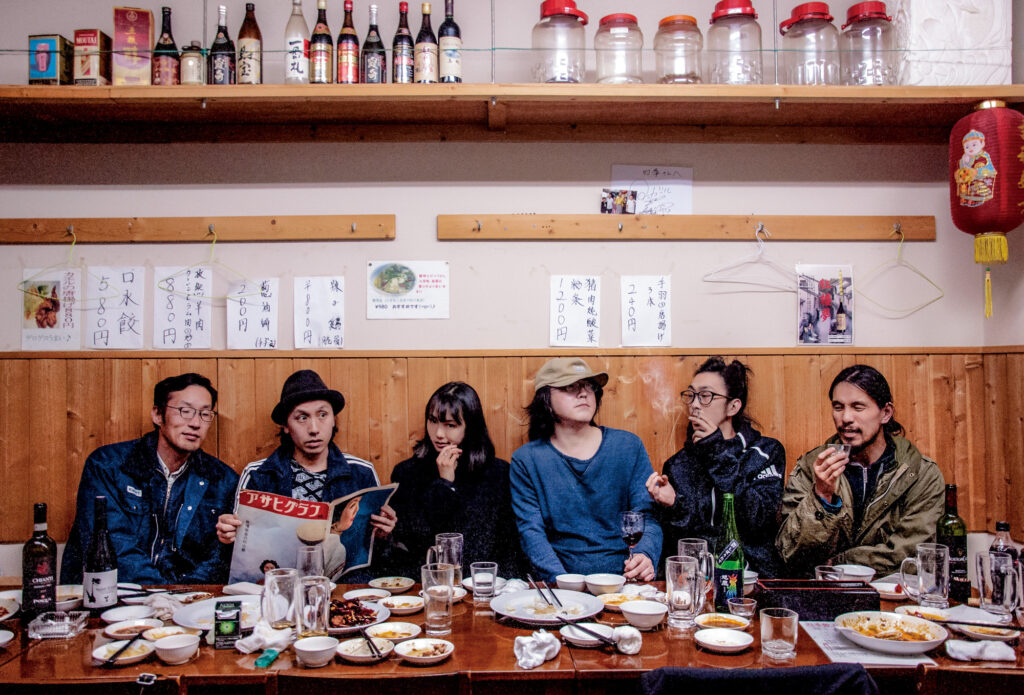Chim↑Pom
Formed in 2005 in Tokyo, Chim↑Pom is an artist collective known for their public social interventionist projects, typically geared towards raising awareness and discourse for various socio-cultural issues. Issues their art typically tackles includes environmental degradation, normative notions of value under capitalism, social taboos and marginalization (especially pertaining to gendered and Othered bodies), and the nature of mass media.
They have held exhibitions at a range of institutions around the world (including at MoMA), and have participated in various art festivals across almost every continent. Works produced by Chim↑Pom’s artists are held in collections at institutions such as the Centre Pompidou in Paris, the Solomon R. Guggenheim Museum in New York, the Hammer Museum in Los Angeles, M+ in Hong Kong, and at the Museum of Contemporary Art in Tokyo.
Since its founding, Chim↑Pom has participated in exhibitions around the world and developed various independent initiatives in gallery settings and through collaborations with other groups. Today, they opperate as the Smappa! Group, which focuses on projects in Tokyo’s Kabukicho district including public art initiatives, community engagement initiatives, and tackling issues in the night-club sector— including women’s’ safety in club settings. They operate several “host clubs” for women across Tokyo, aimed at fostering inclusivity regardless of nationality, race, or Japanese language ability.

City
Country
Region
Year of Creation
Featured Project

Resources
“Chim↑Pom from Smappa!Group.” Mujin-To Production, https://www.mujin-to.com/en/artist/chimpom/.
“Chim↑Pom: Happy Spring.” Mori Art Museum, 18 Feb. 2022, https://www.mori.art.museum/en/exhibitions/chimpom/.
“Energy of Chaos: Eight Essential Works of Chim↑Pom.” ArtAsiaPacific, 18 Feb. 2022, https://www.artasiapacific.com/people/energy-of-chaos-eight-essential-works-of-chim-pom/.
Petty, Felix. “chim↑pom: the subversive collective shaking up japan’s art scene.” i-D, 1 May 2015, https://i-d.co/article/chimpom-the-subversive-collective-shaking-up-japans-art-scene/.
Takahashi, Ryu and Brandon Stosuy. “Chim↑Pom on working as a collective.” The Creative Independent, 24 Jan. 2018, https://thecreativeindependent.com/people/chim-pom-on-working-as-a-collective/.
More Information
IMPORTANT: Profile pages for all collectives are in permanent development and have been built using information in the public domain. They will be updated progressively and in dialogue with the organizations by the end of 2024. New features and sections will be included in 2025, like featured videos, and additional featured projects. Please contact us if you discover errors. For more information on mapping criteria and to submit your organization’s information to be potentially included in the database, visit this page

